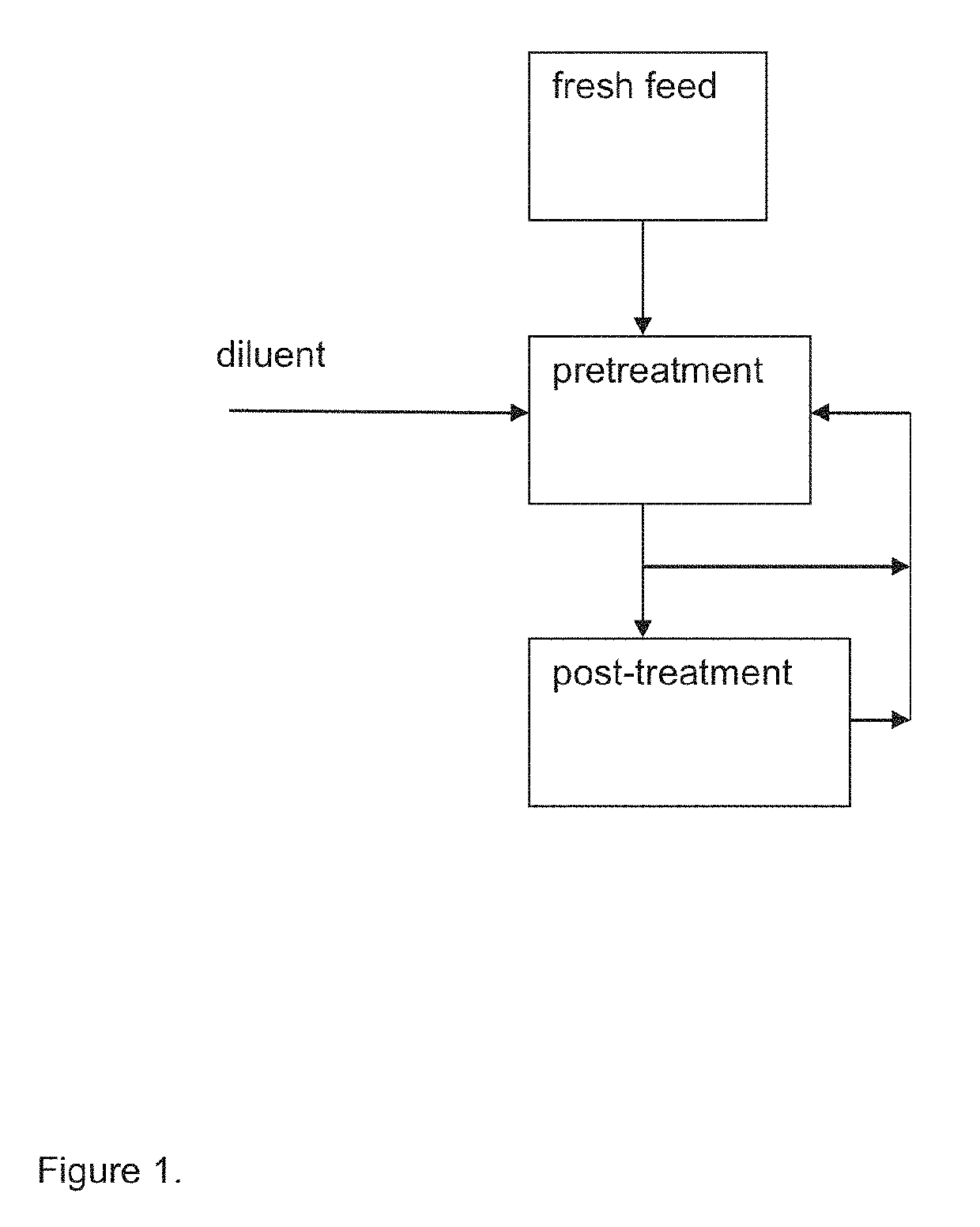Process for manufacture of liquid fuel components from renewable sources
a technology of renewable sources and liquid fuel components, applied in the direction of fatty acid chemical modification, fatty oil/fat refining, hydrocarbon oil treatment products, etc., can solve the problems of poor low-temperature properties, poor stability, and limited use of transportation fuel components as such
- Summary
- Abstract
- Description
- Claims
- Application Information
AI Technical Summary
Benefits of technology
Problems solved by technology
Method used
Image
Examples
example 1
[0073]Cloud points of ten samples were determined using ISL MPP 5GS MINI analyzer.
[0074]Reference sample 1: pure (100%) animal fat (AF) with no added organic lipophilic solvent
[0075]Sample 2: animal fat 90% by weight with 10% by weight of added organic lipophilic solvent wherein the solvent was NExBTL
[0076]Sample 3: animal fat 80% by weight with 20% by weight of added organic lipophilic solvent wherein the solvent was NExBTL
[0077]Sample 4: animal fat 60% by weight with 40% by weight of added organic lipophilic solvent wherein the solvent was NExBTL
[0078]Sample 5: animal fat 20% by weight with 80% by weight of added organic lipophilic solvent wherein the solvent was NExBTL
[0079]Reference sample 6: pure NExBTL
[0080]Sample 7: animal fat 90% by weight with 10% by weight of added organic lipophilic solvent wherein the solvent was heptane
[0081]Sample 8: animal fat 80% by weight with 20% by weight of added organic lipophilic solvent wherein the solvent was heptane
[0082]Sample 9: animal fat...
example 2
[0088]Animal fat (=AF) originating from food industry waste having an iodine value of about 55 was used as feedstock. Three test runs were made by varying the dilution of the fresh feedstock (samples 2-3) before entering it into degumming.
[0089]Reference sample 1: pure (100%) animal fat with no added organic lipophilic solvent
[0090]Sample 2: animal fat 80% by weight with 20% by weight of added organic lipophilic solvent wherein the solvent was NExBTL
[0091]Sample 3: animal fat 60% by weight with 40% by weight of added organic lipophilic solvent wherein the solvent was NExBTL
[0092]Reference sample 4: pure NExBTL
[0093]NExBTL diesel retrieved from the process outlet was stabilized in Rotavapor at 100 mbar pressure and 105° C. temperature. Stabilization was made to remove the light hydrocarbons for safety reasons. Cloud point of the NExBTL diesel was measured to be −48.5° C.
[0094]A feedstock sample was taken for metal content analysis and phosphorus analysis (ASTMD5185). Animal fat feeds...
example 3
[0099]Undiluted palm oil (CPO) and a mixture of 50 w-% hydrodeoxygenated (HDO) vegetable oil (HDO) and 50 w-% palm oil was filtered through a 4 g cake of BASF / F-160 clay in Dahlmann apparatus (filter surface ˜0.001 m2). The hydrodeoxygenated diluent contained mainly n-paraffinic C16 and C18 hydrocarbons. The pressure drop (=dp) was measured over the cake for the two filtration series and the collected filtrate (g) versus the filtration time is depicted in FIG. 5.
[0100]From the figure it can be seen that for the 50 / 50 mixture already at 10 min. filtration time, more than twice the amount of filtrate is collected (less than 40 g for palm oil compared to more than 80 g for 50 / 50 mixture). At 20 min., the pressure drop for palm oil has already increased to 2 bar compared to 1 bar at the beginning and the collected filtrate for palm oil is still only half the amount of the 50 / 50 mixture.
[0101]Based on the experiment, theoretical densities and viscosities for the pure components and mixtu...
PUM
| Property | Measurement | Unit |
|---|---|---|
| pressure | aaaaa | aaaaa |
| temperature | aaaaa | aaaaa |
| temperature | aaaaa | aaaaa |
Abstract
Description
Claims
Application Information
 Login to View More
Login to View More - R&D
- Intellectual Property
- Life Sciences
- Materials
- Tech Scout
- Unparalleled Data Quality
- Higher Quality Content
- 60% Fewer Hallucinations
Browse by: Latest US Patents, China's latest patents, Technical Efficacy Thesaurus, Application Domain, Technology Topic, Popular Technical Reports.
© 2025 PatSnap. All rights reserved.Legal|Privacy policy|Modern Slavery Act Transparency Statement|Sitemap|About US| Contact US: help@patsnap.com



